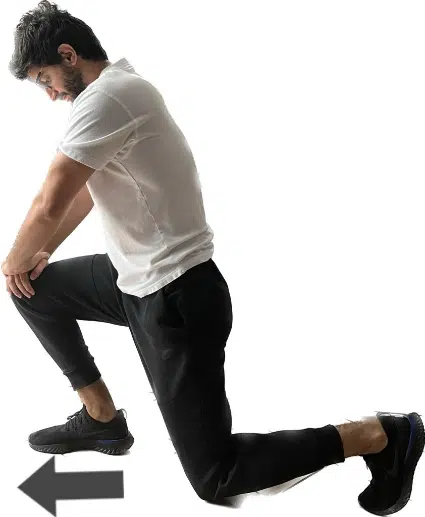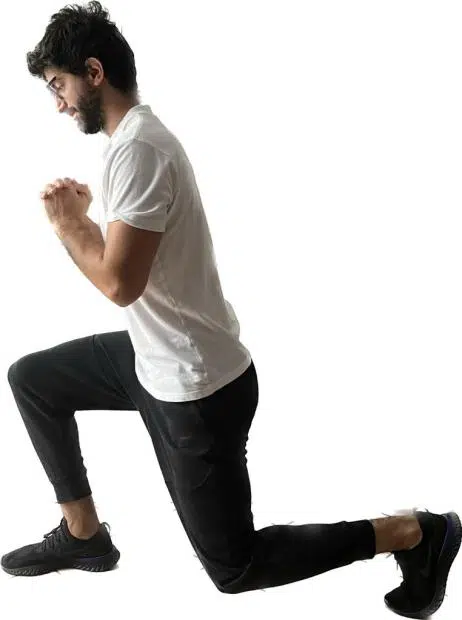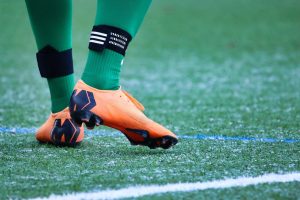Let’s continue talking about running injuries that can affect the ankle.
In this third article on common injuries that can affect runners, we will focus on the ankle and foot area, which rank second in incidence after the knee. First, we need to distinguish between two types of injuries affecting this region:
- Traumatic injury: ankle sprain (typically inversion sprain).
- Overuse injury: Achilles tendinopathy and plantar fasciopathy.
Traumatic Injuries
For the first category, being traumatic events, these are usually injuries that force the runner to stop immediately, with an inability to bear weight and functional deficits (lack of strength).
Ankle Rehabilitation Protocols
The acute phase, meaning the days immediately following the trauma, is characterized by swelling, pain, and reduced ankle mobility. As with the previous articles, we recommend contacting a doctor and/or physiotherapist as soon as possible to manage the situation properly.
One of the most widely used protocols after an ankle sprain is called “PEACE and LOVE,” an acronym summarizing the key actions to take for optimal recovery:
- P: “Protection” (protection) — in the first days, avoid all activities that cause pain;
- E: “Elevation” (elevation) — keeping the foot elevated above heart level helps reduce swelling by promoting venous return and lymphatic activity;
- A: “Avoid anti-inflammatories” (avoid anti-inflammatory drugs) — in the acute phase, inflammation is a natural and necessary process that starts tissue repair. Taking anti-inflammatories at this stage can be counterproductive; for pain management, however, painkillers can be taken if needed;
- C: “Compression” (compression) — a compression bandage helps both swelling control and ankle stabilization;
- E: “Education” (education) — consult a healthcare professional who can explain and guide you through the different phases of recovery;
- L: “Load” (load) — in the first few days, crutches can be used to partially offload the ankle. Gradually, guided by symptoms, you can return to daily and then sports activities;
- O: “Optimism” (optimism) — even if initial pain feels intense, maintaining a positive attitude and noticing daily improvements is important;
- V: “Vascularisation” (vascularisation) — choose pain-free cardiovascular activities to support the body’s natural healing processes;
- E: “Exercise” (exercise) — gradually restore ankle and foot mobility, strength, and proprioception through active rehabilitation exercises.
Overuse Injuries
The second category of ankle and foot injuries are overuse injuries. They have a more subtle onset: initially causing mild discomfort that may disappear with warm-up, but in the medium to long term, if neglected, the pain may increase both during running and in daily activities.
The terms “tendinitis” and “fasciitis” are now outdated; as noted earlier, we refer instead to “tendinopathy” and “plantar fasciopathy,” because the suffix “-itis” refers to inflammation, which is not the primary mechanism in these musculoskeletal conditions.
Achilles tendinopathy and plantar fasciopathy most often result from training errors: increasing workload too abruptly without adequate recovery, or resuming running at usual speed and distance after a period of inactivity instead of progressively increasing parameters such as distance, pace, and incline.
As in the previous article on knee injuries, if you experience localized pain or swelling along the Achilles tendon or plantar fascia, we recommend being evaluated by a doctor and/or physiotherapist. Below we highlight the main risk factors predisposing runners to these conditions.
Causes of Tendinopathy and Fasciopathy
- Reduced ankle and foot mobility: Limited dorsiflexion is one of the main risk factors. Stretching the calf muscles and joint mobility exercises can help improve ankle function. A useful pre-run warm-up is to oscillate forward and back for about 30 seconds per leg, closing the angle between shin and foot as much as possible.
- Weak calf muscles: Strong muscles protect tendons. On non-running days, calf strengthening (such as heel raises, especially on a step for added stretch and strength) helps protect both the Achilles tendon and plantar fascia. Perform both bilaterally and unilaterally, 2–3 sets of 8–12 reps.
- Weak hip abductors: Weak gluteal muscles (gluteus maximus, medius, minimus) predispose runners not only to knee problems but also ankle issues. Strengthening these muscles with exercises such as squats and long-step lunges—either bodyweight or with weights—provides benefits across the lower limb.
- Inappropriate footwear: Using worn-out shoes, logging too many miles in the same pair, or wearing shoes unsuited to your running style increases the risk of tendon problems, especially in the ankle but also in the knee.



Conclusions
The ankle and foot play a fundamental role in running dynamics, yet they are often overlooked until pain appears. For a complete overview of running injuries, we invite you to also read the other in-depth articles in this series:
The Approach at Polispecialistico Paradiso
Afterward, assessment tests are carried out (orthopedic, neurological, strength, joint mobility tests, etc.) in order to formulate a hypothesis about the tissue or tissues we intend to treat during our physiotherapy sessions.
There will always be an exchange of information between patient and physiotherapist, and it is precisely on this feedback that we base subsequent treatments.
The person is always treated with a 360-degree approach, and our philosophy towards musculoskeletal conditions is bio-psycho-social: we do not limit ourselves to assessing the state of biological tissues, but also how this condition affects the patient’s life and their interaction with the external environment.
This philosophy leads to a physiotherapy treatment that goes beyond the four walls of the clinic, as physiotherapist and patient work together to find solutions on how to manage the issue throughout daily life and over the following weeks and months.


